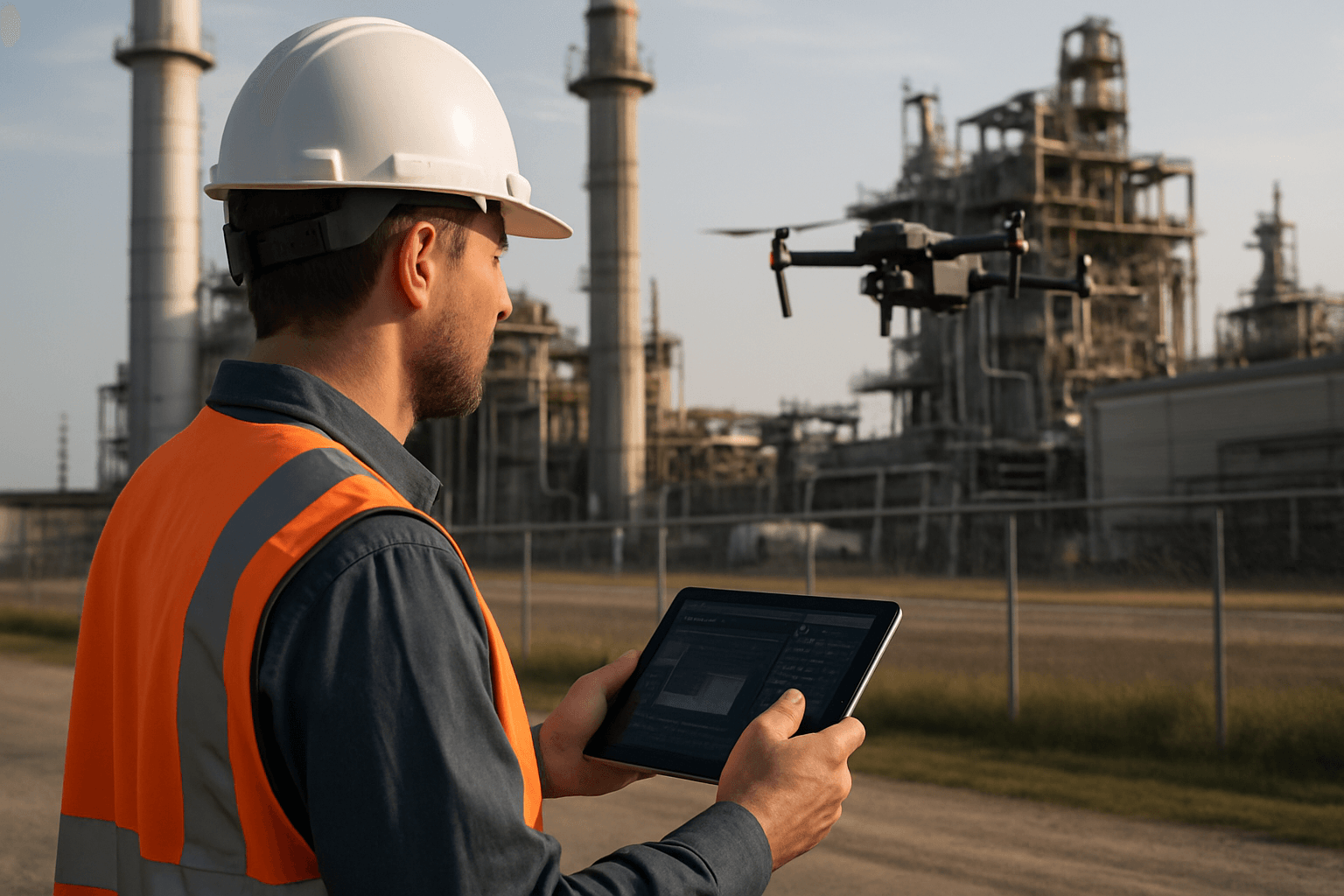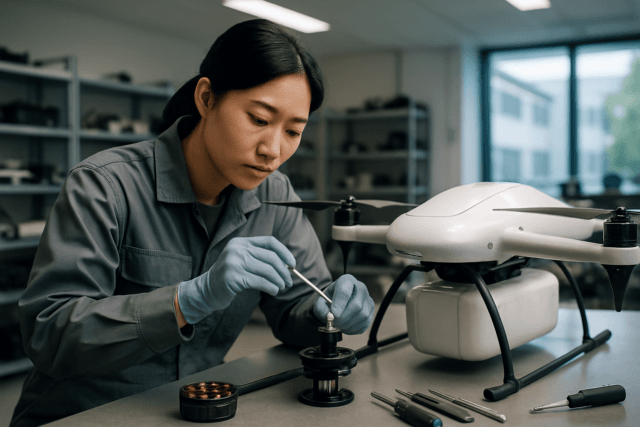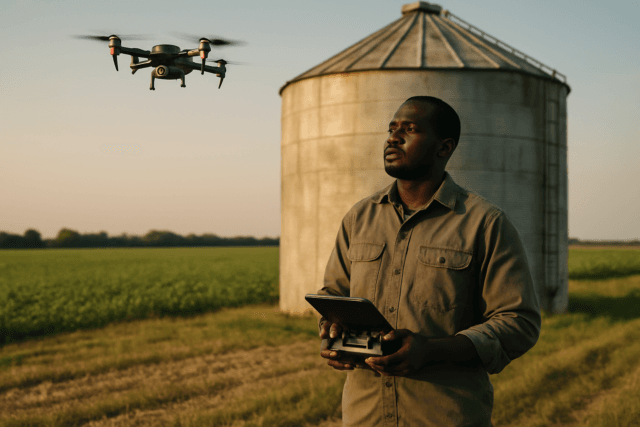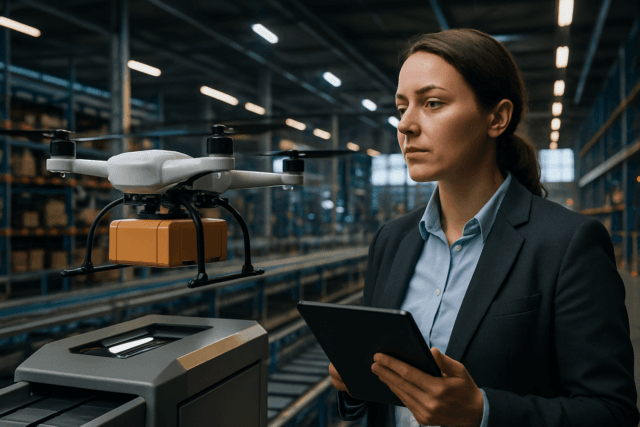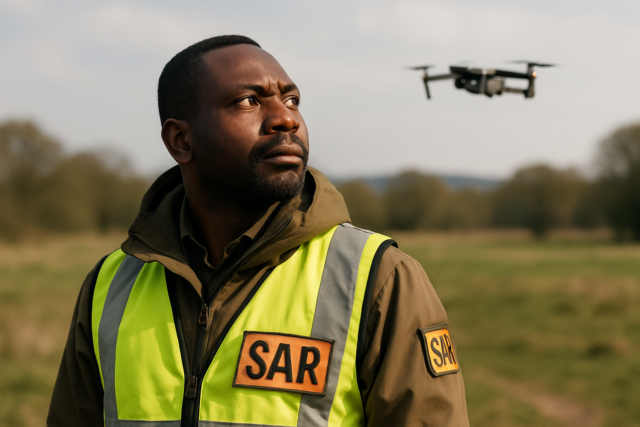Drones, also known as unmanned aerial vehicles (UAVs), have transitioned from military and recreational applications to become powerful tools for businesses across various sectors. The capacity to gather data remotely, conduct inspections, and automate tasks offers a compelling case for cost savings compared to traditional methods. This article explores the ways in which drones provide financial benefits, examining real-world examples and industry insights to provide a comprehensive understanding of their economic advantages.
Industries Benefiting from Drone Cost Savings
Drones are versatile and create cost efficiencies across industries such as:
- Construction: Drones streamline site surveys, monitor progress, manage resources, and inspect equipment, reducing downtime and improving accuracy.
- Agriculture: Drones enhance crop management through land mapping, precision farming, agrochemical spraying, and crop assessment.
- Infrastructure Inspection: Drones safely inspect bridges, power lines, and pipelines, reducing downtime and maintenance costs.
- Security: Drones offer cost-effective and comprehensive surveillance for corporate campuses and other facilities, reducing the need for extensive personnel and infrastructure.
- Delivery: Drones provide faster and more reliable last-mile delivery, especially in areas that are difficult to reach with traditional methods, potentially reducing costs by up to 70%.
- Emergency Services: Drones assist in search and rescue operations, conduct patrols, and act as first responders, offering significant cost savings compared to helicopters and traditional methods.
- Surveying and Mapping: Drones conduct land surveys and terrain mapping faster and more affordably than traditional methods, reducing downtime and preventing costly rework.
Direct Cost Reductions
Drones cut costs in several key areas:
- Reduced Labor Costs: Drones require smaller teams to operate compared to traditional methods that involve large crews. For example, drone surveys can be conducted by a small team of pilots and data analysts, reducing the need for extensive manpower.
- Elimination of Scaffolding and Rope Access: For inspections of high-rise buildings or infrastructure, drones eliminate the need for expensive scaffolding or rope access teams. This can result in substantial savings, as exemplified by a project in Sheffield where drones saved £30,000 in scaffolding and inspection costs.
- Lower Equipment Costs: Drones can replace specialized inspection tools and reduce the need for heavy machinery, resulting in significant savings.
- Decreased Downtime: Quick data collection and real-time monitoring reduce project downtime. A RICS report indicated that drone deployment could reduce large-project site downtime by up to 40%.
- Efficient Resource Management: Drones enable real-time tracking of materials, equipment, and inventory on construction sites, ensuring efficient resource allocation and reducing wastage.
Enhanced Operational Efficiency
Drones improve operational efficiency through:
- Faster Data Collection: Drones can cover large areas quickly, collecting data in a fraction of the time compared to traditional methods. Drone mapping can be up to 400 times faster than ground surveys.
- Improved Accuracy: High-resolution cameras and sensors capture precise data, reducing errors and rework. A 5% quantity variance can be observed between traditional survey methods and drone surveys, with drones providing more accurate results and reducing discrepancies.
- Better Decision-Making: Accurate and timely data enables informed decision-making, optimizing processes and minimizing risks.
- Increased Safety: Drones can access hazardous or difficult-to-reach areas, reducing risks to human workers. This leads to fewer accidents, lower insurance premiums, and reduced injury-related costs.
- Comprehensive Data Collection: Drones capture high-resolution images, thermal data, and real-time video, providing a comprehensive view of the situation. This data is easily stored and accessed, promoting collaboration and transparency.
Real-World Cost Savings Examples
Several case studies highlight the significant cost savings achieved through drone integration:
- Construction Site Surveying: Barratt Developments cut £20,000 in labor costs by using drones for housing site surveys.
- Police Air Service Operations: Shifting police air service operations to drones resulted in a 55.4% cost reduction, saving approximately £22.6 million per year.
- Maritime and Coastguard Agency: The Maritime and Coastguard Agency estimates roughly £1.6 million per year in operating costs saved by using drones for search-and-rescue and patrols.
- Security Services: Titan Protection, a security company, reduced security costs by 60% by implementing autonomous drone technology, leading to a complete ROI within 12-18 months for clients.
- Last-Mile Delivery: Depot-based drone delivery can lead to up to 60% cost savings compared to truck-only delivery in low-demand areas.
- Aircraft Inspections: Using drones for aircraft inspections results in considerable cost savings through reduced downtime, converting waiting time into flying time for airlines, and enabling earlier hangar input for MROs.
Calculating Return on Investment (ROI) for Drone Services
Calculating the ROI for drone services involves several steps:
- Determine the Initial Investment: This includes the cost of equipment (drones, accessories, software) and training.
- Estimate Annual Cost Savings: Include reduced labor, improved efficiency, decreased maintenance costs, and other savings.
- Calculate Annual Revenue Generated: This includes increased crop yields, more efficient construction projects, higher property sales, and other revenue streams.
- Subtract Initial Investment and Annual Costs from Annual Revenue.
- Divide the Result by the Initial Investment to Obtain the ROI.
Example:
- Initial Investment: Drone system (£4,000) + Mapping software (£5,000) = £9,000
- Traditional Surveying Costs (per project): £2,400
- Drone Surveying Costs (per project): £120
- Cost Savings (per project): £2,400 – £120 = £2,280
- ROI (after 3 projects): (£2,280 x 3 – £9,000) / £9,000 x 100 = -24%
In this example, the ROI is achieved within 2-3 projects, demonstrating the cost-effectiveness of drone services.
Challenges and Considerations
Despite the numerous benefits, there are challenges to consider when implementing drone technology:
- Initial Investment: High-quality mapping drones can be expensive, ranging from £30,000 to upwards of £200,000.
- Regulatory Compliance: Strict regulations related to safety and privacy concerns can hamper commercial drone operations. Organizations must adhere to local regulations and obtain necessary certifications and permissions.
- Training and Expertise: Proper training is essential to operate drones safely and efficiently. Land surveyors, for example, may be hesitant to use drones due to a lack of expertise and concerns about the cost of training.
- Maintenance and Downtime: Proper maintenance is crucial to ensure the long-term ROI of drones. Regular maintenance, battery replacements, and skilled operators can minimize operational costs.
- Weather Conditions: Drones may not be suitable for use in all weather conditions, which can affect data collection and project timelines.
The Future of Drone Cost Savings
The economic benefits of drones are expected to increase as technology advances and regulations become more streamlined. PwC UK estimates that drones could contribute up to £45 billion to the UK economy by 2030, with £22 billion in net cost savings and 650,000 jobs associated with a fully adopted drone economy. As drone technology becomes more integrated into various industries, the potential for cost savings and efficiency gains will continue to grow.
Conclusion
Drones offer substantial cost savings across numerous industries by reducing labor costs, improving efficiency, enhancing safety, and enabling better decision-making. While initial investment and regulatory compliance require careful consideration, the long-term ROI of drone integration is significant. As technology evolves and adoption increases, drones will continue to transform business operations, driving economic growth and delivering tangible financial benefits.

